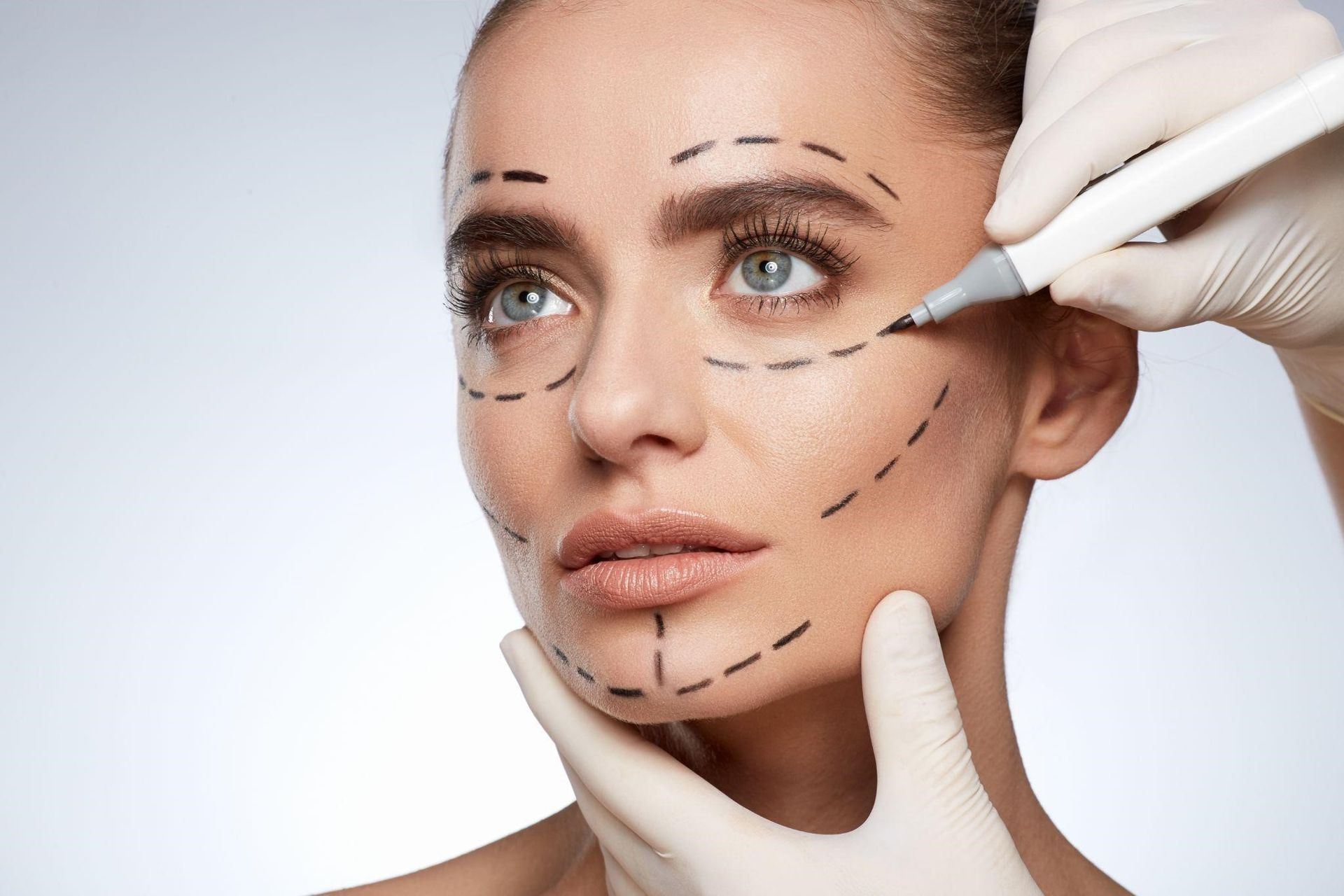Facelift in Grants Pass, OR: 7 Secrets to a Rejuvenated Appearance

Aging is a natural part of life, but that doesn’t mean you have to feel stuck with wrinkles, sagging skin, or lost facial volume. If you’ve ever wished for a fresher, more youthful look, you’re not alone.
Many people turn to facelifts as a way to restore their facial contours and boost their confidence. This time-tested procedure can help you look as vibrant on the outside as you feel on the inside.
What is a Facelift?
A facelift, medically known as rhytidectomy, is a surgical procedure aimed at reducing visible signs of aging in the face and neck. By removing excess skin, tightening underlying tissues, and repositioning facial fat, a facelift can address issues such as sagging skin, deep creases, and jowls, resulting in a more youthful and refreshed appearance.
Types of Facelifts
Facelift procedures vary in technique and intensity, each designed to target specific aging concerns and deliver different levels of rejuvenation. Below are the most common types of facelifts, ranging from minimally invasive options to more comprehensive surgical approaches.
Traditional Facelift
This comprehensive procedure addresses moderate to advanced aging around the mid-face and neck. It involves incisions around the ears, extending into the hairline, allowing for the removal of excess skin and tightening of deeper tissues. This method effectively corrects sagging skin, deep creases, and jowls.
Mini-Facelift
Ideal for individuals experiencing early signs of aging, the mini-facelift is less invasive than the traditional approach. It focuses on specific areas, such as the jawline and lower cheeks, using shorter incisions. This technique results in a quicker recovery time while still providing noticeable improvements.
SMAS Facelift
The Superficial Musculoaponeurotic System (SMAS) facelift targets the deeper layers of facial muscles and tissues. By repositioning and tightening these structures, this technique offers natural-looking results, particularly in the mid and lower face regions.
Deep Plane Facelift
This advanced technique involves repositioning deeper facial tissues, including muscles and fat pads, to restore youthful contours. By addressing the root causes of sagging, the deep plane facelift achieves longer-lasting and more natural results compared to traditional methods.
Mid-Facelift
Focusing on the central portion of the face, the mid-facelift addresses sagging cheeks and deep nasolabial folds. By lifting and repositioning the underlying tissues, this procedure restores fullness to the cheeks and smooths smile lines, enhancing overall facial harmony.
2. Benefits of a Facelift
A facelift provides both physical rejuvenation and emotional benefits. Here’s how it enhances appearance and confidence.
Physical Enhancements
- Reduction of Wrinkles and Fine Lines: A facelift effectively smooths out deep wrinkles and fine lines, particularly those around the nose and mouth, resulting in a more youthful complexion.
- Tightening of Sagging Skin: By removing excess skin and tightening underlying tissues, a facelift addresses sagging in the face and neck, providing a firmer and more toned appearance.
- Improved Facial Contours and Definition: The procedure restores definition to the jawline and cheeks, enhancing facial contours and creating a more sculpted look.
Emotional and Psychological Benefits
- Boosted Self-Confidence: Achieving a rejuvenated appearance can significantly enhance self-esteem, leading to increased confidence in social and professional interactions.
- Enhanced Social Interactions: Feeling more youthful and vibrant often translates to a more active social life, as individuals may feel more inclined to engage in social activities without the concern of appearing aged or tired.
3. The Ideal Candidate for a Facelift
Determining the right candidate for a facelift involves several factors, including age, overall health, and skin quality. Below are the key considerations for those considering the procedure.
Age Considerations
While there is no specific age requirement for a facelift, most candidates are between their 40s and 60s. However, the procedure can be performed successfully on individuals outside this age range, depending on their overall health and skin condition.
Health Status
Ideal candidates are in good overall health without medical conditions that could impair healing. Non-smokers or those willing to quit prior to surgery are preferred, as smoking can negatively affect recovery and outcomes.
Skin Characteristics
Individuals with good skin elasticity and strong bone structure tend to achieve the best results. Elastic skin adapts better to the new contours created during the procedure, while a well-defined bone structure provides a solid foundation for enhancements.
4. The Facelift Procedure: What to Expect

Understanding the facelift process can help set realistic expectations and ensure a smoother experience. Below is a step-by-step overview, from pre-surgery preparations to post-operative recovery.
Pre-Operative Preparations
- Consultation and Medical Evaluation: A thorough consultation with a qualified surgeon is essential to discuss goals, assess facial anatomy, and determine the most appropriate technique. A medical evaluation ensures that the patient is fit for surgery.
- Pre-Surgery Guidelines: Patients may be advised to adjust certain medications, avoid aspirin and anti-inflammatory drugs, and cease smoking to promote optimal healing.
Surgical Steps
- Anesthesia Administration: Facelifts are typically performed under general anesthesia or intravenous sedation, ensuring patient comfort throughout the procedure.
- Incision Placement: Incisions are strategically placed along the hairline and around the ears to minimize visible scarring. The exact placement depends on the specific technique and areas being addressed.
- Repositioning and Tightening of Tissues: The surgeon lifts and repositions underlying tissues, removes or redistributes fat, and tightens muscles to restore youthful facial contours.
- Closing the Incisions: Incisions are meticulously closed with sutures, and in some cases, skin adhesives are used. Proper closure techniques are vital for optimal healing and minimal scarring.
Post-Operative Care
- Recovery Timelines: Initial healing occurs within 1-2 weeks, with most patients returning to normal activities after 2-4 weeks. Complete recovery may take several months as swelling subsides and incision lines refine.
- Managing Swelling and Discomfort: Cold compresses, prescribed medications, and keeping the head elevated can help manage swelling and discomfort during the initial recovery phase.
- Follow-Up Appointments: After undergoing a facelift, attending scheduled follow-up appointments with your surgeon is crucial for monitoring the healing process and ensuring optimal results. These visits allow the surgeon to assess incision sites, address any concerns, and provide guidance on post-operative care.
5. Risks and Considerations
While facelifts are generally safe when performed by skilled surgeons, like any surgery, they come with potential risks that should be carefully considered.
Potential Complications
Like any surgical procedure, facelifts carry inherent risks. Potential complications include:
- Infection: Post-operative infections can occur, necessitating prompt medical attention and antibiotic therapy.
- Scarring: While surgeons strive to place incisions discreetly, some scarring is inevitable. Proper wound care and time typically result in scars that fade and become less noticeable.
- Nerve Injury: Facial nerve damage, though rare, can lead to temporary or permanent facial muscle weakness or numbness. Most nerve injuries resolve over time, but some may require additional interventions.
Other potential risks include hematoma formation, anesthesia complications, and poor wound healing. A comprehensive discussion with your surgeon about these risks is essential prior to surgery.
Managing Expectations
Achieving satisfaction with facelift outcomes hinges on maintaining realistic expectations. While the procedure can significantly rejuvenate your appearance, it cannot halt the aging process or transform your fundamental facial structure.
Understanding the limitations and potential results fosters a healthy outlook and enhances overall satisfaction with the procedure.
6. Non-Surgical Alternatives

For those seeking facial rejuvenation without surgery, several non-invasive options are available:
Ultherapy
Ultherapy utilizes ultrasound technology to stimulate collagen production, resulting in skin lifting and tightening. This FDA-approved treatment targets the deeper layers of the skin without incisions, offering a non-surgical alternative to a facelift.
Dermal Fillers
Injectable dermal fillers restore volume and smooth out wrinkles by filling in areas of the face that have lost fullness due to aging. Commonly treated areas include the cheeks, nasolabial folds, and lips. The results are immediate and can last from several months to over a year, depending on the type of filler used.
Botox Injections
Botox works by temporarily relaxing facial muscles that cause wrinkles, particularly in the forehead, between the eyebrows, and around the eyes. The treatment is quick, with minimal downtime, and results typically last three to four months.
Laser Treatments
Laser skin resurfacing improves skin texture and tone by removing damaged outer layers and stimulating collagen production. This treatment addresses fine lines, wrinkles, and pigmentation issues, resulting in a more youthful complexion.
7. Choosing the Right Provider in Grants Pass, OR
Selecting a qualified and experienced provider is paramount to achieving safe and satisfactory results. At Southern Oregon Medical Aesthetics, our team combines artistic vision with clinical expertise to help you achieve your aesthetic goals. We prioritize your care, offering treatments designed to deliver radiant, natural-looking results.
FAQs
1. How long do facelift results last?
Typically, facelift results can last between 10 to 15 years, depending on individual factors such as skin quality, lifestyle, and aging process.
2. What is the recovery time for a facelift?
Most patients return to normal activities within 2 to 4 weeks post-surgery. However, complete recovery may take several months as swelling subsides and tissues heal fully.
3. Are there visible scars after a facelift?
Surgeons aim to place incisions in discreet locations, such as along the hairline and natural facial creases, to minimize visible scarring. Over time, these scars typically fade and become less noticeable.
4. What is the cost of a facelift in Grants Pass, OR?
Costs vary depending on the provider, extent of the procedure, and additional factors. It's best to consult local providers for accurate pricing tailored to your specific needs.
Conclusion
A facelift can significantly enhance your appearance, boosting self-confidence and providing a more youthful look. However, it's essential to thoroughly consider the potential risks and benefits, maintain realistic expectations, and choose a qualified provider.
Consulting with a trusted professional will help you explore personalized options and make an informed decision about your facial rejuvenation journey.
At South Oregon Medical Aesthetics, we specialize in personalized facelift procedures designed to deliver natural, long-lasting results. Contact us at (541) 472-3223 or schedule a consultation and take the first step toward a more youthful you!

